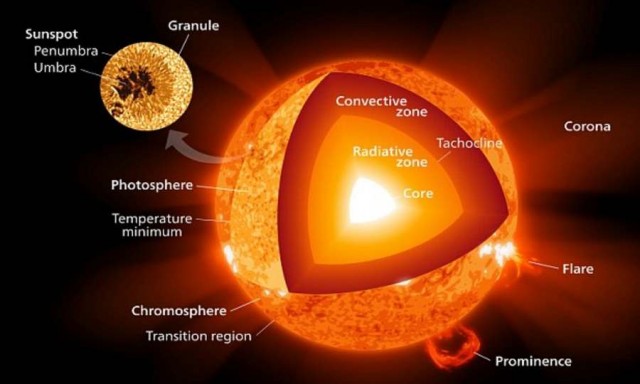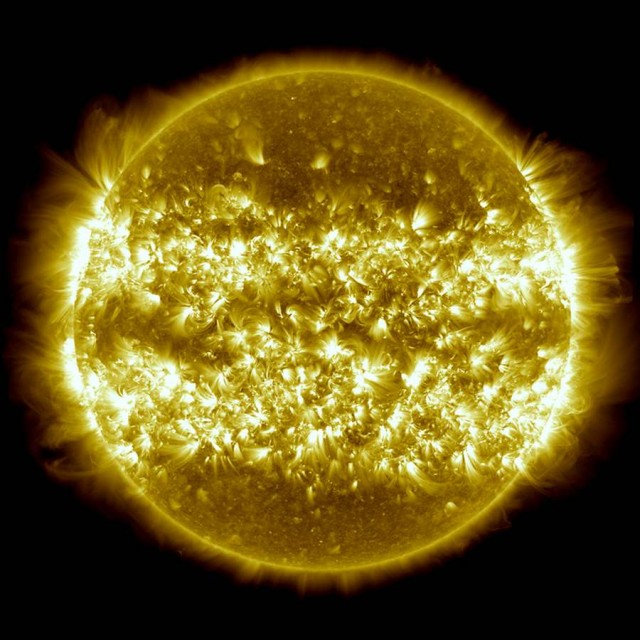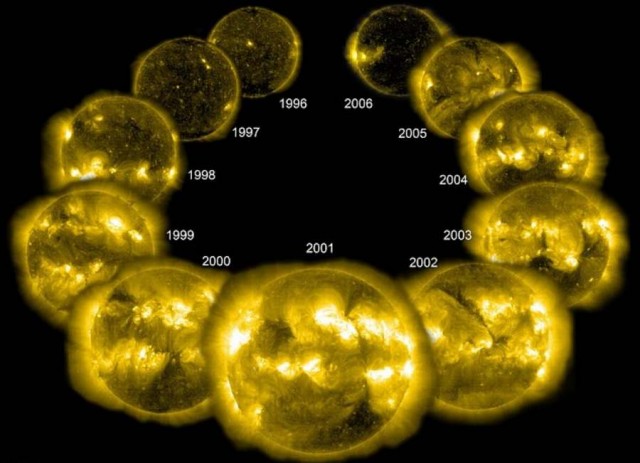Our sun is constantly changing, the activity cycle peaks approximately every 11 years. New research shows evidence of a shorter time cycle as well, with activity waxing and waning over the course of about 330 days.
Above: The 11-year solar cycle sees a periodic change in the sun’s activity. Credit NASA
The Sun goes through cycles of activity – swinging between times of relative calm and times when frequent explosions on its surface can fling light, particles and energy out into space.
Understanding when to expect such bursts of solar activity is crucial to successfully forecast the sun’s eruptions, which can drive solar storms at Earth. These space weather events can interfere with satellite electronics, GPS navigation, and radio communications. The quasi-annual variations in space weather seem to be driven by changes in bands of strong magnetic field that are present in each solar hemisphere, said researchers in a paper published on April 7, 2015, in Nature Communications.
The scientists note that the changes in the magnetic field in the bands gives rise to a 330-day activity cycle on the sun that is observable but has often been downplayed and overlooked when trying to seek the cause of the sun’s longer, 11-year cycle.
 The various different regions of the sun and a sunspot. Credit NASA
The various different regions of the sun and a sunspot. Credit NASA
Scott McIntosh, lead author of the paper and director of the High Altitude Observatory of the National Center for Atmospheric Research in Boulder, Colorado, said:
“What we’re looking at here is a massive driver of solar storms. By better understanding how these activity bands form in the sun and cause these seasonal instabilities, we can greatly improve forecasts of space weather.”
 A composite of 25 separate images from NASA’s SDO, spanning one year from April 2012 to April 2013. The image reveals the migration tracks of active regions towards the equator during that period. Image credit: NASA/SDO/Goddard
A composite of 25 separate images from NASA’s SDO, spanning one year from April 2012 to April 2013. The image reveals the migration tracks of active regions towards the equator during that period. Image credit: NASA/SDO/Goddard
source NASA






Leave A Comment